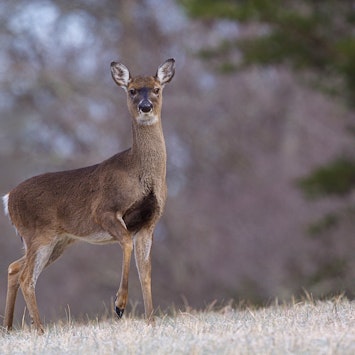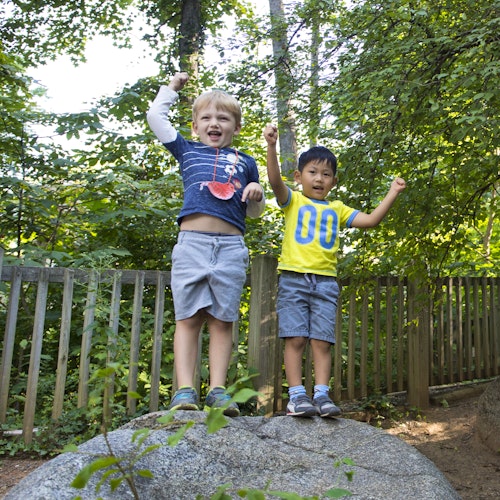Paw Paw Nature Trail
For nature lovers of all ages, an easy-to-navigate trail alive with native flora and fauna

Proceed to the next screen to select your date and entry time
General Admission | ||
|---|---|---|
| Adults | $8 | |
| Children | $8 | |
| Children under 2 | FREE | |
| Members | FREE | |
| Next | ||
As an EBT or WIC benefit, NC and SC residents can visit the Museum through our Welcome program for only $2 per person, per visit for up to 6 guests. Have questions? Click here to learn more.
Were not open today

Each season brings new adventures and ways to connect with nature at the Museum, and it’s an especially fun place to warm-up as the weather turns cold.
Active Animals
Cooler weather means some animal friends are packing to head south for the winter, but those who stay also have a lot of work to do. This makes for an awesome visitor experience as many Paw Paw Nature Trail residents start to prepare for winter.
Chipmunks and squirrels are a regular sight busily collecting falling nuts from the oaks, hickories, and walnut trees. Did you know mast is the term used to collectively define the ‘fruit of forest trees’ like acorns and other nuts that accumulate on the ground?
Also falling with the temperature and nuts are leaves. You’ll be able to observe many animals making use of the dead leaves on the forest floor for nesting materials that will help them stay warm and survive the cold nights.
Keep an eye out for the dark green, heart-shaped leaves of the arrow-leafed ginger, sometimes also called little brown jugs (Hexastylis arifolia) in clusters on the ground. This plant is very aromatic, smells like sassafras and stays a dark shiny green year-round.
Winter Sightings on Paw Paw Nature Trail
Consider timing your visit with a guided Nature Walk on the fourth Saturday of each month, or a guided Bird Walk on the first Saturday of each month (both experiences are included with Museum admission) and are unique in the winter.
Fort Wild and Paw Paw Nature Trail also are a great way to stay active and get in some much-needed outdoor play which can be hard to find the motivation for in the winter.
Winter brings changes inside the Museum, too. The animals on exhibit are affected by the shortened days. Their sleep cycle and appetite change, so you may see them sleep more, which equals an exceptional opportunity to make new observations. Engaging for all ages, join a guided Animal Encounter on Wednesday, Friday or Sunday in Creature Cavern for a more in-depth experience about the wonder that winter brings the natural world.
Don’t Hibernate – Stay Up Late
Just as some animal behavior changes in winter, yours can too with a nighttime visit to the Museum. Every Tuesday the Museum is open until 8:00 p.m.; the animals move at a different pace after dark, and it’s a wonderful time to do some winter sky gazing from the deck.
If you can’t make it late, make sure to catch a daily Seasonal Stargazing show in the planetarium. It’s a 15-minute guided tour of the night sky and is particularly spectacular this time of year. Tickets are included with Museum admission but make sure to reserve them at the Admissions desk.
Winter obviously is also a good time to learn about animals that do hibernate. Check out the daily puppet show and storytime that explore seasonal changes in nature and how animals adapt.
And, there’s always cool fun in Peetie’s Place which provides a warm refuge to read, do puzzles and sensory-based activities, or put on your own puppet show.
Research Your Own Winter Backyard
Take what you learn with you and make some observations in your own backyard. With more leaves on the ground animals scurrying from burrow-to-burrow or foraging for food are much more noticeable.
Journal what you see as you look for more birds at bird feeders, increased activity from squirrels, and you may even be lucky enough to see a gray or red fox who are more active during winter and always on the move looking for food.
Make sure to bring in your notes, journal or pictures to the Museum’s naturalists, they love to hear about your field research and are happy to answer any questions.
For nature lovers of all ages, an easy-to-navigate trail alive with native flora and fauna

An outdoor exhibition that encourages imaginative play in a creative environment

Gaze up at the spring stars and constellations in this guided tour


| Time | Event | Location |
|---|---|---|